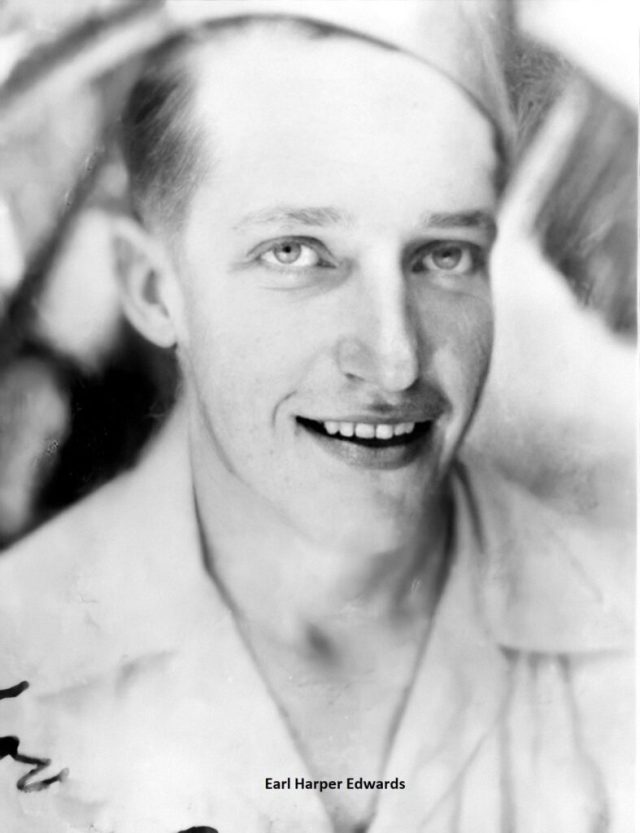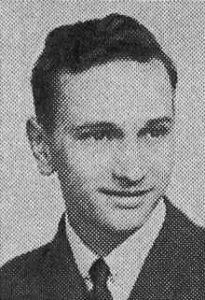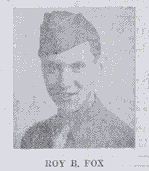“Bodies of American Soldiers, formerly of the 28th Infantry Division, found dead in the Ardennes sector. All evidence seems to point toward German atrocity, since bodies were lined up in ordeal fashion, with the only wounds being bullet holes in the head.” This was the original description of photographs taken by Signal Corps photographer Gerald V. Horton. The caption noted the discovery was made by the 2nd Battalion, 11th Infantry Regiment, 5th Infantry Division, two miles northeast of Hoscheiderdickt, Luxembourg, on February 1, 1945. These striking photographs raise critical questions: What happened to these seven Americans? Who were they? Where were the photographs taken? Despite their widespread circulation online and inclusion in the official history of the U.S. 5th Infantry Division, little effort has been made to answer these questions. While the National Museum of Military History in Diekirch, Luxembourg, identified Wahlhausen as the likely location, the incident is not listed among Luxembourg’s documented war crimes at the U.S. National Archives. In this publication, I aim to resolve the mystery, and the answer might surprise you: It’s not what it seems.





I began by reviewing the 5th Infantry Division records at the U.S. National Archives. References to the “atrocity” appeared in the 11th Infantry Regiment S-3 journal and the 5th Division G-3 journal, which contained messages directed to the Operations staff section. However, beyond the mention of the ‘atrocity,’ there was little new information. One notable detail stood out: the journal recorded eight bodies found at the scene.
“If the dead American soldiers were indeed from the 28th Infantry Division, identifying them shouldn’t be too difficult,” I thought. When the German counteroffensive began, the 110th Infantry Regiment of the 28th Infantry Division defended the sector from Marnach, Luxembourg, in the north to Putscheid, Luxembourg, in the south. The 3rd Battalion was tasked with holding the southern sector, with Company I maintaining outposts in Weiler and Wahlhausen.
I turned to the official history of the 110th Infantry Regiment but found no mention of the photographs or massacre. Given that M Company served as the battalion’s Heavy Weapons Company, I decided to use the Morning Reports for Companies I and M to compile a list of men recorded as killed in action (KIA). Most of these men were initially listed as missing in action (MIA), so I cross-referenced their records on Fold3 to determine whether they were later identified as KIA or prisoners of war (POW).
In December 1944, Company I had 13 men listed as KIA, and Company M had 9. To build a clearer picture of what transpired, I turned to the Individual Deceased Personnel Files (IDPFs) of the men listed as killed or missing. These files held the potential to reveal not only the identities of the fallen but also the circumstances surrounding their deaths.
Evidence

A key piece during my research was a German document l found in the online catalog of the US National Archives. It noted that eleven American dog tags were removed from a group of dead soldiers near the crossroads of Vianden-Hosingen-Wahlhausen-Merscheid on December 26, 1944. For two individuals, both tags were recovered, leaving a total of nine dog tags corresponding to the following men and their companies:
- Pfc. Warren H. Schneider, 36263965, Company I
- Pvt. Raymond J. Lansky, 35066832, Company I
- Pfc. Rexford Hayes, 36894177, Company I
- Lt. A. Howard Irvine, O-1319211, Company M
- Pvt. George E. Stubbs, 34979767, Company M
- Pfc. Everette T. Burns, 34732940, Company M
- Pvt. Earl H. Edwards, 35245927, Company M
- Cpl. Mark H. Caldwell, 35228897, Company M
- Pfc. Gordon A. Beck, 31403355, Company M
Upon obtaining the IDPFs of these men, I found that each burial record stated the bodies were among nine individuals brought to the American Cemetery at Hamm. Units from the 5th Infantry Division initially transported them, confirming I was investigating the correct area.
At first, the records seemed to support suspicions of a war crime. However, as I examined the IDPFs in detail, a different narrative emerged. Only one of the nine IDPFs included the complete investigation report by the 5th Infantry Division.

The investigation was led by Lt. Col. Clarence J. Nelson of the Divisional Inspector General’s Department, who may appear in photograph 111-SC-212427 as the individual wearing the insignia of a Lieutenant Colonel. Nelson’s report, dated January 31, 1945, detailed the discovery of seven bodies in a sector occupied by Company F, 2nd Battalion, 11th Infantry Regiment, 5th Infantry Division. The precise coordinates were 8357549 on sheet 6002 of the Ringel Map, Scale 1:25,000—approximately two kilometers northeast of Hoscheiderdickt, Luxembourg. This location corresponded with the site initially believed to match the photographs.
Among the seven bodies, three were identified:
- 1st Lt. Howard A. Irvine
- Cpl. Mark H. Caldwell
- Pfc. Gordon A. Beck
The 28th Infantry Division patch was found on the clothing of Lt. Irvine and Pfc. Caldwell. Additionally, Pvt. Everette T. Burns’ paybook was discovered nearby.
Nelson’s report concluded that no atrocity had been committed by enemy troops in this case. His findings were based on the following observations:
- All personnel were killed by small-arms fire, with wounds in various parts of their bodies. The exact date of death was indeterminate, but the bodies had been buried under snow and only emerged after a thaw in late January.
- There was evidence that the bodies had been dragged to their final location after dying elsewhere.
- The manner of death lacked uniformity, suggesting no systematic execution.
Nelson speculated that German forces might have attempted to collect the bodies for burial but had been forced to abandon the effort before completion.
While the Inspector General’s report clarified the circumstances of the discovery, it left unanswered questions about the identities of the remaining men. To address these gaps, I cross-referenced the recovered evidence with additional records, leading to a clearer—but still incomplete—picture. Beyond Lt. Irvine, Pfc. Caldwell, and Pfc. Beck, the investigation report failed to identify the other four bodies. The IDPFs for Pvt. Raymond J. Lansky and Pfc. Rexford Hayes revealed their bodies were discovered post-war near the same location. Lansky’s body was found in a collapsed foxhole on May 18, 1945, by Michel Schaul of Wahlhausen, Luxembourg. While the sketch marking Lansky’s location aligns with Hayes’, Hayes’ IDPF does not mention Schaul as the discoverer.
The IDPFs also revealed two additional men from M Company were found in the area: S/Sgt. Robert J. Price and S/Sgt. Roy B. Fox. Fox was promptly identified by ID tags found in his hip pocket.

Using another sketch in the investigation report, the seven bodies were tentatively identified as follows:
- Body 1: Lt. Howard Irvine
- Body 2: Unidentified
- Body 3: Had its head crushed
- Body 4: Unidentified
- Body 5: Cpl. Mark H. Caldwell (identified by ID tags)
- Body 6: Initially listed as X-23, later confirmed as Pfc. Everette T. Burns (via his paybook)
- Body 7: Pfc. Gordon A. Beck (identified by ID tags)
This leaves Pvt. Earl H. Edwards, S/Sgt. Roy B. Fox, S/Sgt. Robert J. Price, Pfc. Warren H. Schneider, and Pvt. George E. Stubbs unaccounted for in the initial identification. Among these, only Edwards had injuries consistent with a crushed head, likely caused by a vehicle, suggesting Body 3 was Edwards. As Fox was immediately identified, it seems improbable he was among the seven photographed bodies.
However, the IDPF for Pfc. Warren H. Schneider clarified that he remained missing and was never recovered. His name is listed on the Wall of the Missing at the Luxembourg American Cemetery in Hamm, suggesting that Schneider was not among the seven bodies found at the site. Ultimately, bodies designated X-25 and X-28, recovered near the crossroads, were identified as Price (X-25) and Stubbs (X-28). If Schneider’s body was indeed never recovered, the other two bodies are most likely Price and Stubbs. This means that all seven bodies identified in the investigation belonged to men from Company M of the 110th Infantry Regiment.
Location
To pinpoint where the photographs were taken, we analyzed aerial photographs of Wahlhausen and cross-referenced them with the coordinates provided in the investigation report. Additionally, we scanned the negatives of the Signal Corps photographs to ensure no details were cropped out of the images. These scans revealed that the building in the background had an L-shaped structure, which matched an aerial photograph dated January 15, 1945. Although we were fairly confident in identifying the location, we visited the site last October to confirm that the treeline in the background aligned with the photographs.



Company I and Company M’s at the start of the German Breakthrough
Piecing together the accounts of Company I and M’s positions at the start of the German offensive, a harrowing story emerges. The men, armed with heavy mortars and positioned in Weiler and Wahlhausen, faced overwhelming odds as the German forces advanced. On December 16, at the start of the offensive, Company I was positioned in Weiler, with one platoon in Wahlhausen. It is also known that they had support from 81mm mortars, which were the heavier mortars issued to the men of the Heavy Weapons Company to support the other rifle companies. This suggests that the 81mm mortars in Weiler and around Wahlhausen were from Company M. Notably, all three men from Company I were riflemen, while Company M‘s Beck and Caldwell were mortarmen, with the others serving as ammunition handlers. It is most likely that the men of Company M were part of a mortar squad, with Fox and Price as squad leaders and Lt. Irvine as the platoon leader. The positions at Weiler were eventually overrun on the evening of the 16th, and the men fought their way north toward Consthum. Only twenty out of approximately 140 men reached the town. It was during those first days that these 11 men must have been killed.






Credit
Several individuals were instrumental in helping us with our research. First, we would like to thank fellow Battle of the Bulge researcher Bob Konings. Together, we identified the site in 2022, although at the time, we couldn’t conclusively determine that the crossroad was the location where the photographs were taken. Second, we owe a great deal to Myra Miller from Footsteps Researchers. Her assistance in obtaining all the Individual Deceased Personnel Files (IDPFs) and unit reports was invaluable and ultimately led to the discovery of the investigation report by the 5th Infantry Division.

3 thoughts to “Mystery of the Fallen Soldiers: Uncovering the Story Behind the Wahlhausen Photographs”
Joey, You and the team are amazing! Fantastic work. 80 years later and these discoveries are still being made and families are still getting answers.
Joey,
Lots of research and your findings are incredible. My father was a heavy machine gunner in M Company (110th Infantry Regiment, 2nd Battalion 28th Division). He stopped writing home on the 15th of December 1944 and resumed again on the 24th. He had said they were surrounded at one point during the BOTB and had to get out of there fast.
Would there be any researchers that would be able to trace his footsteps?
Best regards,
Chris
Excellent work as always, Joey. The wonderful efforts of you and your team are appreciated!